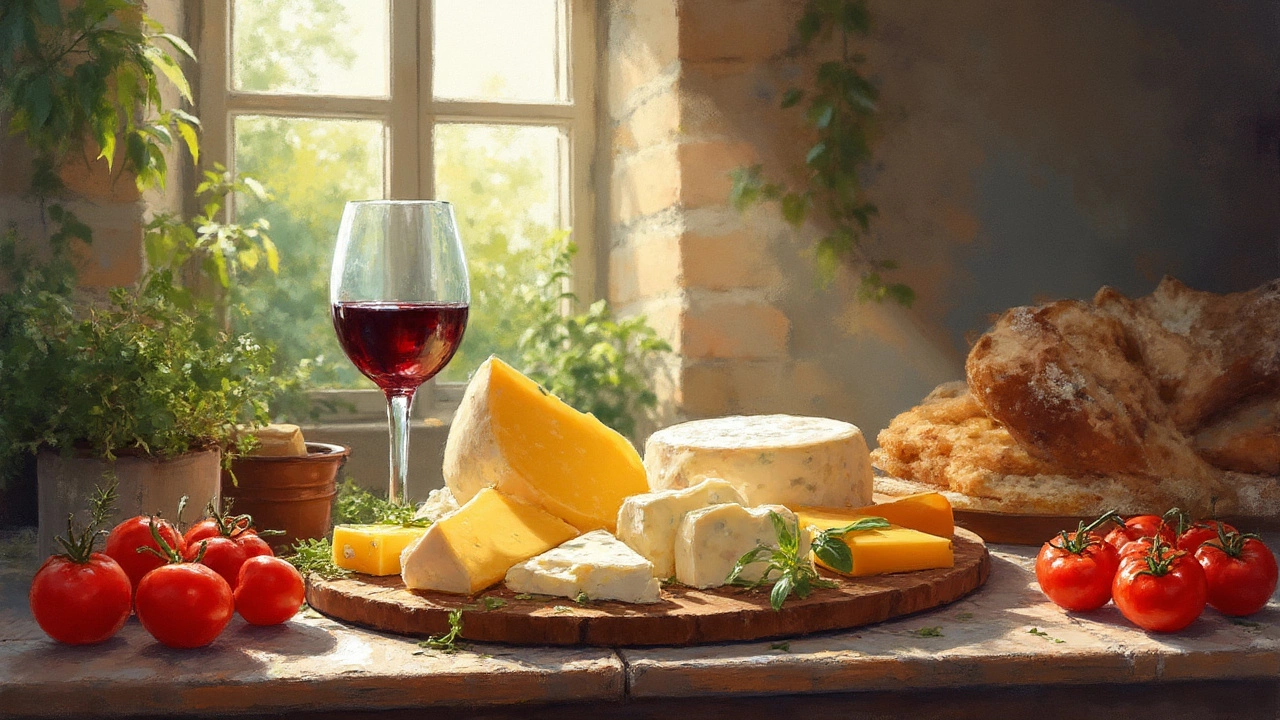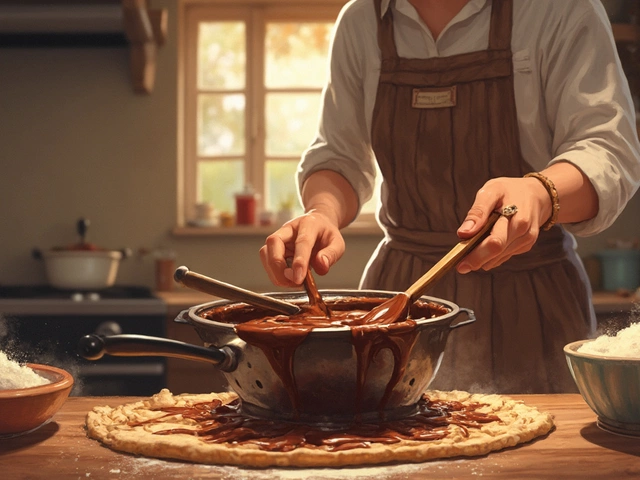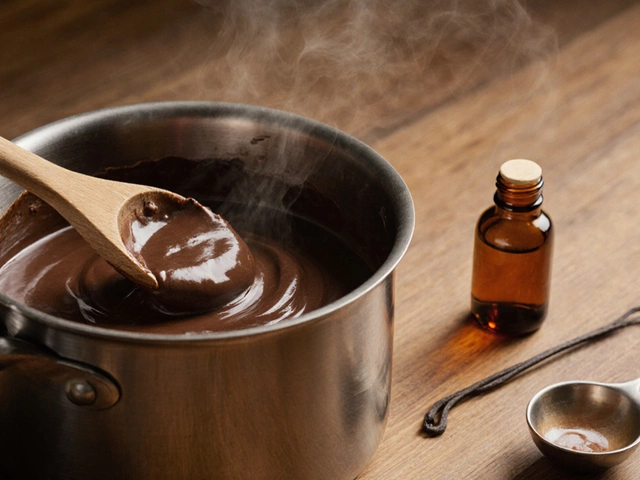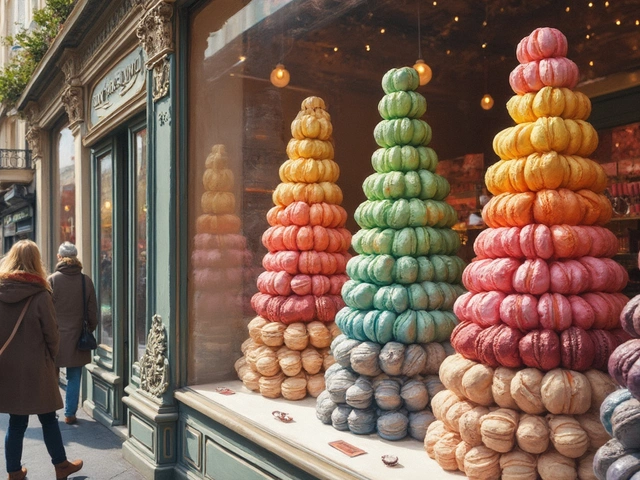
Ever tried to name that unforgettable cheese from your last Italian vacation? Or stood in a grocery aisle, staring at a wall of foreign-sounding names and wondering, “Which one is the real Italian cheese?” It turns out, Italy is cheese heaven—and there isn’t just one name to rule them all. The question “Qual é o nome do queijo italiano?” (What is the name of Italian cheese?) opens a door to hundreds of flavors, traditions, and stories. Italian cheese isn’t just food—it’s a passport to history, culture, and mouthwatering bliss. Ready to get into the details that make Italian cheese unforgettable?
What Makes Italian Cheese So Special?
Italians don’t just make cheese—they practically live for it. Let’s start with the numbers. Italy produces more than 400 types of cheese, according to the official Italian dairy association, and over 50 of them have Protected Designation of Origin (PDO) status. This means these cheeses can’t be copied—unless you’re literally in Italy, following strict rules right down to the grass cows munch on.
The climate and landscape help too. Rolling green hills in Tuscany, snowy Alpine slopes, sun-soaked Sicilian pastures—all these create the perfect playground for happy cows, sheep, goats, and even buffalo. Each region boasts its own signature cheeses, often made with traditional methods passed down for centuries. Some date back to the Roman Empire, when soldiers marched with forms of cheese as part of their daily rations.
What’s the secret sauce? Simplicity and passion, honestly. Most Italian cheeses use just three ingredients: milk, salt, and rennet. Italians let nature and time do the magic. The result is a dizzying range of flavors—from Parmesan's nutty crunch to the milky stretch of fresh Mozzarella—and textures that go from creamy and spreadable to aged and crumbly. Every bite tastes like a short trip to the region where the cheese was born.
Cheese also plays an epic role in Italian life. Think of the big cheese wheels rolled out at weddings, the local markets bustling with cheese stalls, or a nonna handing you a chunk of Pecorino with a proud grin. With each region acting like its own little country when it comes to food, variety is everywhere. And don’t even try to guess the best one—ask any Italian and they’ll swear it’s the cheese from their nonna’s province.
The Classics: Names and Origins of Iconic Italian Cheeses
If you’re after the name of THE Italian cheese, you’re in for a ride. Here are the cheeses that put Italy on the dairy map. Let’s break down their names, where they’re from, and what makes them legendary.
- Parmesan (Parmigiano Reggiano): The king of Italian cheese. It comes from Emilia-Romagna and Lombardy. It takes at least 12 months to mature, but top wheels go over 36. Grate it over pasta, shave it into salads, or snack on chunks with honey.
- Mozzarella: Originating from Campania, true Mozzarella is made from water buffalo milk (mozzarella di bufala). It’s legendary for its soft, stretchy, milky goodness, often eaten fresh.
- Pecorino Romano: Sheep’s milk cheese with a salty punch, made around Rome and Sardinia. This is the cheese that gives Cacio e Pepe pasta its signature flavor.
- Gorgonzola: Italy’s signature blue, born in Lombardy. It comes in two styles—dolce (sweet and creamy) or piccante (stronger and crumbly).
- Ricotta: Technically not a cheese but technically so tasty nobody cares. Ricotta is made from the leftover whey of other cheeses and is smooth, creamy, and mild. Perfect in lasagna or just with honey and fruit.
- Mascarpone: The silky heart of tiramisu, it’s more like a spreadable cream than your typical cheese. Milan’s answer to dessert heaven.
- Provolone: A southern staple, stretched-curd, semi-hard cheese that can go from mild to sharp. A favorite for melting inside panini.
- Taleggio: Soft, stinky, and buttery, it hails from Lombardy’s caves. It’s a flavor bomb on a cheese board or melted into polenta.
Beyond the famous ones, each region has its local stars. In Apulia, you’ll find Burrata—a mozzarella cousin with a creamy filling. In Sicily, Ragusano comes in giant blocks shaped by centuries-old molds. And the Alps are full of smoky mountain cheeses made from the milk of animals that graze on wildflowers.
The table below shows some of the all-time favorites, their milk source, flavor profiles, and best uses:
| Cheese Name | Region | Main Milk | Texture | Flavor | Top Use |
|---|---|---|---|---|---|
| Parmigiano Reggiano | Emilia-Romagna | Cow | Hard | Nutty, savory | Grating, snacking |
| Mozzarella di Bufala | Campania | Buffalo | Soft, elastic | Milky, mild | Salads, pizza |
| Pecorino Romano | Lazio/Sardinia | Sheep | Crumbly | Salty, tangy | Pasta, grating |
| Gorgonzola | Lombardy | Cow | Creamy/crumbly | Sharp, earthy | Salads, sauces |
| Ricotta | Various | Cow/Sheep | Soft | Mild, sweet | Filling, dessert |

How to Choose and Use the Right Italian Cheese
Navigating a deli full of Italian cheeses feels like standing in front of a packed bookshelf: do you pick the classics, or something new and mysterious? The secret is knowing what you want—grating, melting, spreading, snacking—or how adventurous you’re feeling.
- For pasta: Parmigiano Reggiano is always a winner, or Pecorino Romano if you prefer a saltier kick. Grate fresh just before serving—it melts right over pasta and brings the dish alive.
- For pizza: Mozzarella is classic, with buffalo mozzarella giving an extra creamy texture. Add it towards the end of baking for that gooey, stretchy pull.
- Cheese boards: Go for variety—mix hard (like Grana Padano or Pecorino), soft (Taleggio, Gorgonzola dolce), and fresh (Burrata). Throw in olives, sun-dried tomatoes, or figs for an authentic touch.
- Cooking and filling: Ricotta stars in savory fillings (think cannelloni, ravioli) and also in desserts. Mascarpone and Ricotta blend perfectly with honey, lemon zest, or even espresso for a sweet bite.
- Melting and sandwiches: Provolone is a melting champ. For panini, go with Provolone piccante or a young Asiago for a bit of punch.
A great tip? Buy Italian cheese as whole pieces or wedges, not pre-grated or pre-sliced. You get the freshest flavor, and it usually lasts longer. At home, wrap cheese in wax paper or special cheese paper, then keep it in a loosely closed container in your fridge—not in plastic, where it sweats and loses flavor fast. And remember: cheese, like wine, improves if you let it sit at room temperature for about half an hour before eating.
If you’re hunting for cheese abroad (or outside Italy), check labels for the red and yellow DOP/PDO seal. It guarantees you’re getting the real thing, not an off-brand copy.
Fun Facts, Surprises, and Cheese-Lover Tips
Italian cheese carries a history you can taste. Legend says that Gorgonzola’s blue veins were a happy accident when a distracted cheesemaker left a batch in a damp cave—a lucky slip that gave us the legendary blue. Parmigiano Reggiano wheels are so valuable they’re used as collateral for bank loans in Italy (yes, cheese instead of cash as credit!).
Not all mozzarella is created equal, either. “Mozzarella fior di latte” uses regular cow’s milk, while the prized buffalo mozzarella packs more richness and tang. If you’re in the know, always ask for Mozzarella di Bufala for that perfect Caprese salad. And real Italian Ricotta is naturally sweet because it’s made from the freshest leftover whey—try it with just a spoonful of good honey for a simple treat.
Experimenting in the kitchen? Italian cheesemakers say you should never drown cheese-heavy pasta with too much sauce—let the cheese shine. And for grating hard cheeses, try a microplane instead of a box grater—it gives fine, feathery shreds that melt beautifully.
Italians love protecting their cheese traditions, too. There's a “consortium” or governing body for each big-name cheese—think the Parmigiano Reggiano Consortium—that sets the rules for every step, from the type of cow to the color of the cheese rind. They’re strict: one broken rule, and you can’t use the protected name.
- Weird but fun: Italians invented an entire cheese festival called "Cheese" (in Bra, Piedmont) where you can try hundreds of rare, raw-milk creations. And Italy’s “formaggio” isn’t only eaten—you’ll find cheese flavors in gelato shops too (ricotta-saffron, anyone?).
- Avoid putting cheese on seafood pasta in Italy (like Spaghetti alle Vongole)—for locals, it’s a culinary no-no. Save the Parmesan for butter-based or tomato sauces.
So next time someone asks, “What’s Italian cheese called?”, you can give them more than just one name. With each cheese, you’re getting a slice of Italian life, a story that goes way beyond what’s on your plate. Grazie to the cheesemakers—without them, dinner just wouldn’t be the same.





